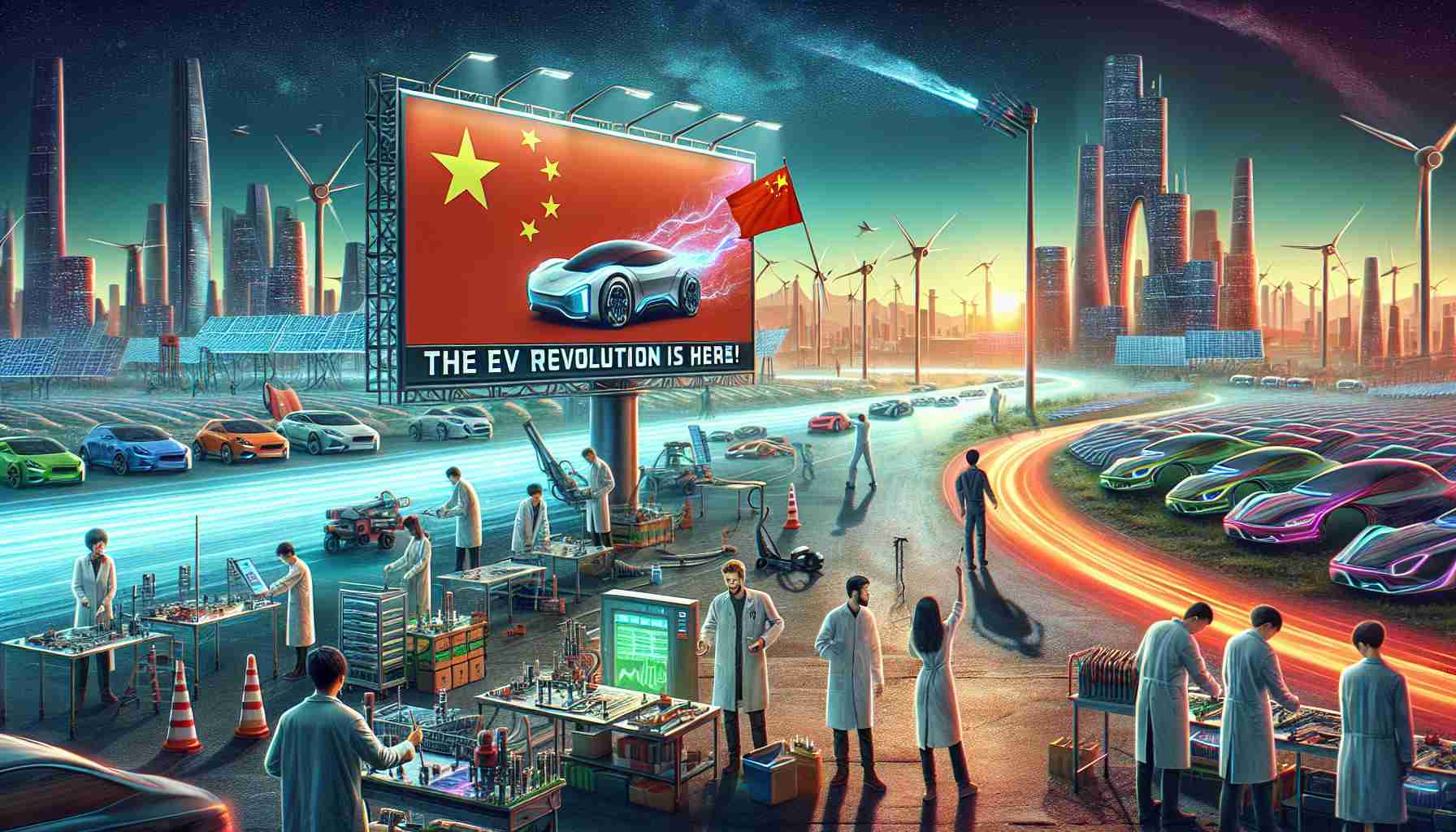The automotive industry is undergoing a seismic shift that could redefine global markets.
As electric vehicles (EVs) rapidly gain traction, traditional car manufacturers face unprecedented challenges. The emergence of Chinese EV manufacturers has particularly raised eyebrows across the globe, as they now dominate the market and are poised to outpace established companies significantly. Analysts note that unless trade barriers intervene, these Chinese firms may well leave their competitors in the dust.
Historically, automotive production has been a cornerstone of economies in the United States, the United Kingdom, and parts of Europe, Japan, and South Korea. Not only does the industry provide millions of jobs, but it also serves as a key economic indicator and a measure of societal wellbeing.
However, the spotlight has shifted from internal combustion engines (ICEs) to EVs, thanks to groundbreaking advancements and shifting consumer preferences. Since entering the market, EV sales have skyrocketed, now on track to surpass ICE sales driven by several factors.
The narrowing price gap between EVs and ICEs is a significant advantage, particularly as fuel efficiency standards tighten globally. With EVs converting an impressive 91% of energy to power compared to a mere 12% to 30% for ICEs, their appeal is undeniable. Furthermore, the overall savings on fuel and maintenance make EVs increasingly attractive to consumers.
This fierce competition in the EV landscape has become one of today’s major geopolitical arenas, with China firmly seated at the forefront. As the largest market for electric passenger cars, China’s influence will likely shape the automotive industry’s future for years to come.
The Future of Automotive: Embracing Electric Revolution
The Transformation of the Automotive Industry
The automotive industry is experiencing a monumental transformation driven by the rise of electric vehicles (EVs). As traditional car manufacturers grapple with the challenges presented by this shift, they face increased competition, particularly from Chinese EV manufacturers who are making significant inroads into global markets.
Market Shift Towards Electric Vehicles
EV sales are not just climbing; they are predicted to surpass sales of internal combustion engine (ICE) vehicles in several market segments within the next decade. This shift is propelled by various factors:
– Technological Advancements: Continuous improvements in battery technology, charging infrastructure, and vehicle efficiency are making EVs more attractive and accessible to consumers.
– Environmental Regulations: Increasingly stringent regulations aimed at reducing carbon emissions are pressuring manufacturers to pivot towards electrification.
– Cost Efficiency: With a considerable reduction in manufacturing costs, EV prices are becoming more competitive. Analysts project that by 2025, EVs will often offer similar, if not lower, price points than ICE vehicles, especially as incentives from governments and energy-saving positions become common.
Comparison: EVs vs. Internal Combustion Engines
| Feature | Electric Vehicles (EVs) | Internal Combustion Engines (ICEs) |
|————————|————————–|—————————————|
| Energy Conversion | 91% efficiency | 12%-30% efficiency |
| Fueling Costs | Lower long-term | Higher long-term cost |
| Maintenance | Lower maintenance costs | Higher maintenance costs |
| Environmental Impact | Zero tailpipe emissions | Significant CO2 and pollutant emissions |
Emerging Players in the Market
Chinese EV manufacturers, including companies like BYD and NIO, are not only dominating the local market but are also expanding their reach globally. This trend raises questions about the sustainability of traditional automakers and how they will adapt to remain competitive. Analysts suggest that these companies may succeed in market regions currently dominated by well-established brands unless significant trade barriers are implemented.
Pros and Cons of Electric Vehicles
Pros:
– Environmental Benefits: Adopting EVs can substantially lower greenhouse gas emissions.
– Economic Incentives: Many governments around the world are offering tax rebates and incentives for EV purchases.
– High Efficiency: EVs utilize energy more effectively, translating to lower operating costs.
Cons:
– Charging Infrastructure: In many areas, charging stations are still limited, affecting long-distance travel.
– Battery Lifecycle: Concerns over battery production and disposal raise questions about sustainability.
– Range Anxiety: Many consumers still feel uncomfortable with the driving range of current EV models compared to ICE vehicles.
Innovations Shaping the Future
Recent innovations in battery technology, such as solid-state batteries, promise to significantly enhance EV performance by increasing energy density and safety. Moreover, advancements in autonomous driving technology are being integrated into electric vehicles, potentially revolutionizing the way we think about transportation altogether.
Predictions and Insights
Market analysts predict that by 2030, EVs could make up over 50% of new vehicle sales globally. This shift could redefine supply chains and job markets associated with the automotive sector. As the demand for traditional ICE vehicles reduces, numerous job roles may need retraining to meet the needs of the expanding electric vehicle sector.
Security and Sustainability Considerations
As EV technology evolves, cybersecurity becomes an essential focus, particularly with the integration of connected vehicle technologies. Robust security measures must be implemented to protect user data and vehicle integrity.
Conclusion
The automotive industry is on the brink of a major transformation as electric vehicles rise to prominence. With increasing competition from global players, particularly from China, traditional manufacturers must innovate and adapt to survive. The shift towards electrification is not just a trend; it represents the future of mobility, offering a cleaner, more efficient alternative to conventional vehicles.
For further details on the automotive industry’s future, visit The Guardian.













